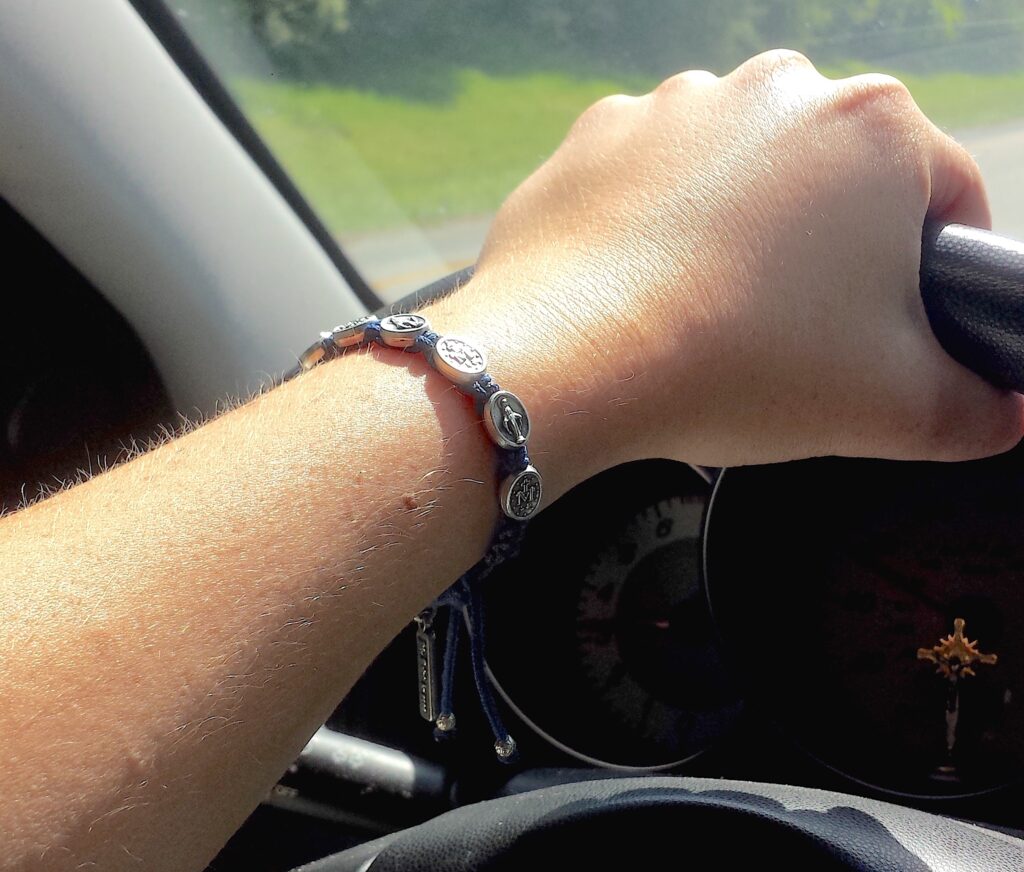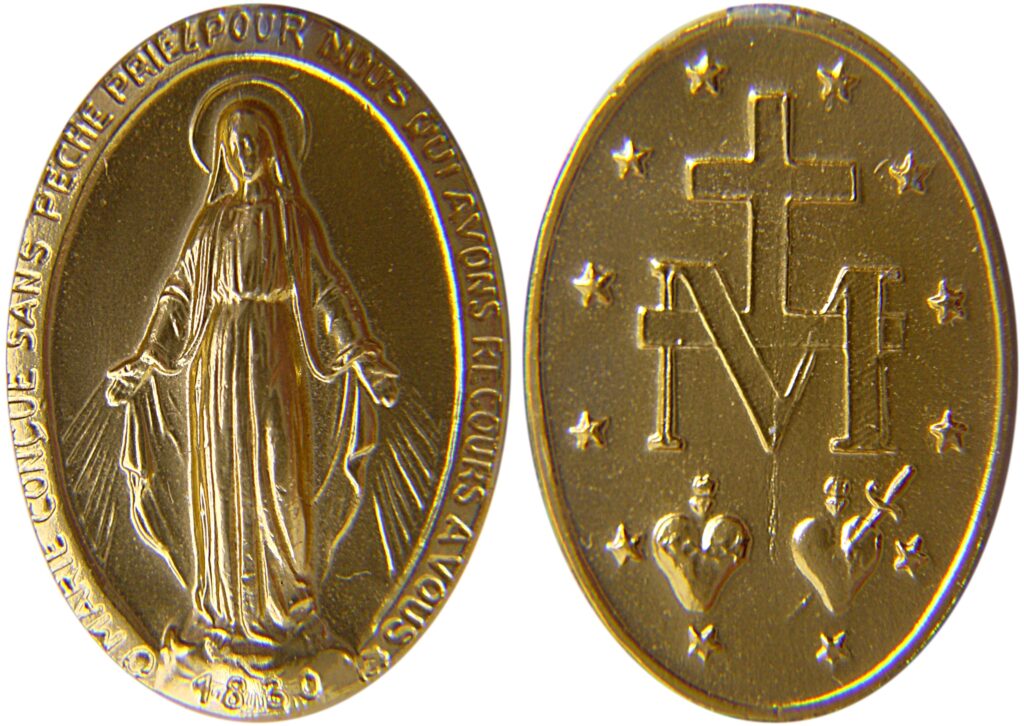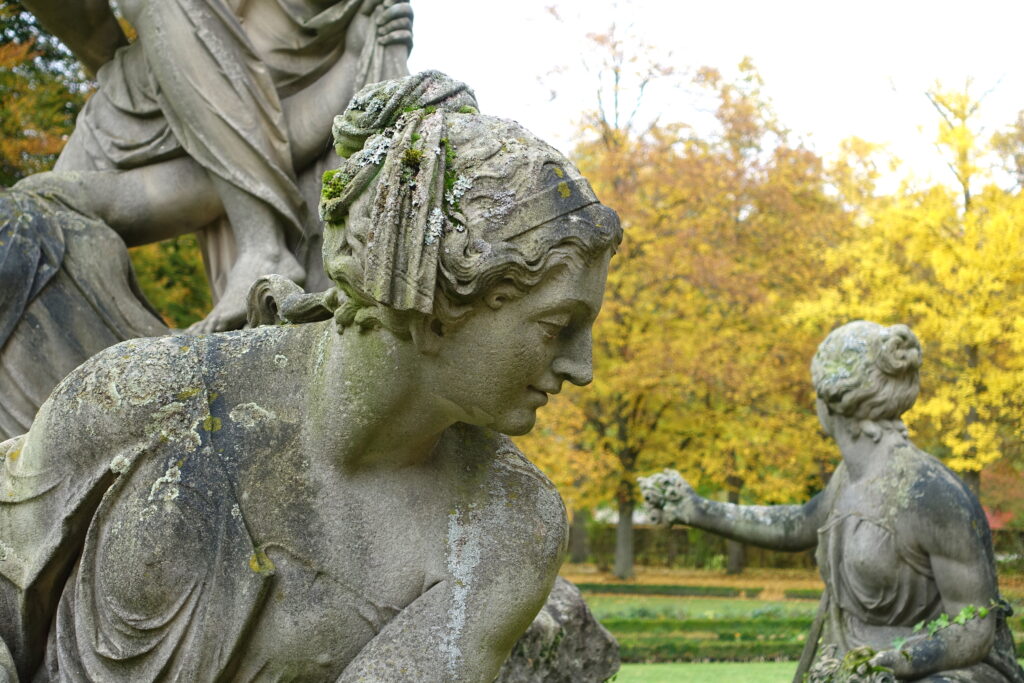What Happens When Catholic Medals Become Mainstream Jewelry

The online retailer Awe Inspired Jewelry offers a Goddess Quiz. Users match their personalities to past, present, or mythological female figures—and then are directed to the company’s purchasable gold and silver medallions featuring those goddesses. Cast on an oval medal pendant, one of the figures is the Virgen de Guadelupe, an apparition of the Biblical Mary, mother of Jesus.
For some radically traditional Catholic devotees, Mary medallions symbolize traditional church practices, including gender politics that relegate women to domestic spaces, enforce hyperfeminine dress and behavior, and prohibit women from leadership positions in the church. But the ballooning market for these medals extends beyond radically traditional Catholic companies and customers. Secular retailers have been marketing Mary medals as symbols of female empowerment, and diverse customers are buying.
As a scholar researching the material aspects of Catholicism, I was curious about the apparent contradiction in these sales. Do secular buyers know the items represent a form a patriarchy in traditional Catholicism? And does wearing the medals for a feminist purpose as part of modern-day goddess worship constitute religious appropriation—or opposition?
MIRACULOUS MEDAL HISTORY
Marian medals, also called miraculous medals, are small Catholic sacramentals—physical objects such as chapel veils and rosaries used to strengthen devotion. The small oval pendants, often made of silver or silver-plated metal, depict Mary standing on a globe with rays of light streaming out of her hands. She is surrounded by the words, “O Mary, conceived without sin, pray for us who have recourse to thee.”
On the medal’s verso appear the letter “M” interlaced with a cross, surrounded by 12 stars representing the tribes of Israel or the apostles. Often the date 1830 appears below Mary’s feet, referencing the year she reportedly first appeared to St. Catherine Labouré.
There are other medallions like miraculous medals: Scapular medals are silver or gold versions of a brown wool necklace Catholics believe Mary designed and gave to St. Simon Stock in 1251. Patron saint medals include the Virgen de Guadelupe medallion, such as the one sold by Awe Inspired.
Within Catholicism, miraculous medals are key parts of Mariology, a field of study focused on the person of Mary in Catholic theology and veneration. As a figure within the Bible, Mary assumes a special role within the Catholic Church: She serves as Mediatrix or intercessor between the person praying and Jesus, although Catholics are quick to add that they do not worship her as a god.
FROM RAD TRADS TO DOJA CAT
But in the past 10 years, miraculous medals, and other objects like rosaries and chapel veils, have experienced a resurgence among a group of younger and middle-aged Catholics who advocate for pre–Vatican II traditions. (The Second Vatican Council took place between 1962 and 1965.) These Catholics, often identified as “rad trads” (“radical traditionalists”) or “rigids,” want the Vatican to return to Tridentine Masses, in which the priest faces away from the congregation, chanting and speaking only in Latin.
Although the rad trad community is not homogenous, many members favor traditional gender roles, such as women donning chapel veils in colors denoting their marital status and only wearing skirts or dresses to Mass. In this way, rad trad Catholic women model their appearance and behavior on Mary, conflating her divine power with her femininity and obedience.
They have also taken up the use of miraculous medals and other sacramentals, but they are not the only Catholics for whom miraculous medals hold meaning. Others see miraculous medals as a way to uplift matriarchal values in a patriarchal faith system.
Read more about material culture and Christianity, from the archives: “Do Clothes Make a Messiah?”
I was therefore not surprised to see miraculous medals popping up online from Catholic companies such as Huerta Jewelry, Stella and Tide, Molly Brown London, and Telos Art.
But I was surprised to see secular, mainstream companies selling or reselling items resembling miraculous medals. Those companies include Colette Jewelry, Luca and Danni, The Good Collective, Local Eclectic, and Awe Inspired—a business that says it strives to “give the gift of awe through empowering jewelry that celebrates the divine feminine.”
According to the sellers I interviewed, the miraculous medal fad spread among both religious and secular jewelry wearers at the same time. The Catholic company Miraculous Revival shifted from selling locally to advertising through Instagram right as the COVID-19 pandemic was announced in spring of 2020. The company’s following skyrocketed, growing from 2,000 to 20,000 followers in one year. It sells out of medals just hours after they go online. BeCoolPro, Chilvado, and Jacaranda Jewelry—three other Catholic companies—started selling necklaces depicting Mary or other saints (in the case of patron saint medals) in 2017, 2019, and 2022, respectively, with the items taking off in the past year.
Secular companies seem to mostly sell to 20- to 40-year-old women. According to the company, Awe Inspired goddess necklaces have been worn by performers such as Doja Cat, Maggie Rogers, Victoria Justice, and Megan Thee Stallion. As Chloe Weitman, owner of Yeah Its Jewelry explains, most people purchasing the Marian medals like to pair them with others featuring female figures or symbols of their identities.
AVOIDING APPROPRIATION
Mary stands as an important religious and cultural figure in secular and religious communities, extending outside of the Catholic Church. Wiccans actively use rosaries in their spell work, and folk Catholics add Mary statuettes to their altars, for example. People who are participating in the recent increase in goddess worship also see Mary as a symbol of divine femininity, one of the few allowed to exist during colonialization, religious erasure, and conversion.
But the popularity of medallions such as miraculous medals is complicated by their association with radically traditional groups within Catholicism. People sporting the medals as fashion may not understand the sacramental’s meaning to these devotees.
That does not mean secular buyers purchasing or wearing the medals is a bad thing. As religious ethicist Liz Bucar has argued for other situations, religious appropriation can be mitigated by learning more about the communities who value religious objects.
Applying her guidance to this case, I suggest companies selling religious medals should research and provide historical and cultural context for the items they distribute. Doing so allows consumers to ethically purchase medallions featuring the Christian Mary—or female divine figures from other cultures such as ancient Greece’s Persephone, the Celtic Rhiannon, or Norse mythology’s Freyja. They should know attraction to these figures is part of a wider movement focused on divine womanhood.
Equipped with this knowledge, buyers can flaunt their Awe Inspired goddess necklace featuring Mary—and decide for themselves whether it represents or rejects radically traditional Catholic gender politics.


































